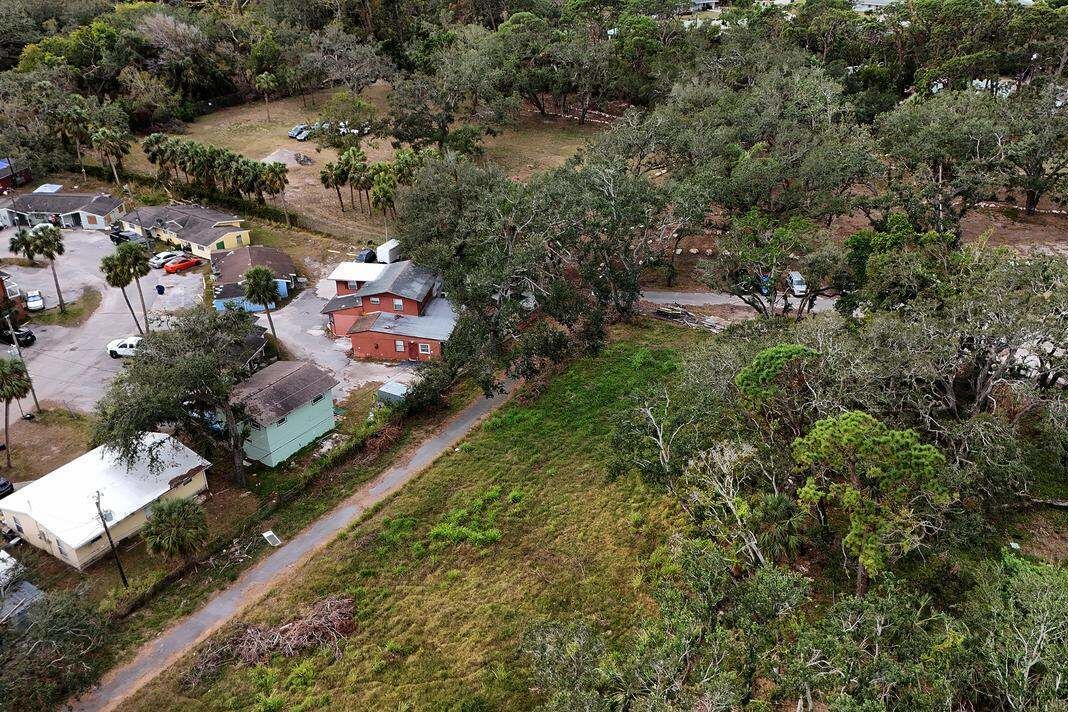New State-Wide Affordable Housing Act Draws Doubts from Local Experts

Height and density bonuses are among the Live Local Act's incentives.
In a place where many residents push back against increased density and heights when it comes to development, new state-wide legislation designed to spur the creation of much-needed affordable housing may not play out the way it’s intended.
In exchange for affordable housing units, under the Live Local Act (SB 102), developers could gain increased heights and densities, bypass zoning rules and speed up projects by skipping over the public comment portion of their project submissions to local government.
Under the bill, which went into effect July 1, the county and city must authorize multi-family and mixed-use residential developments in areas zoned for commercial, industrial or mixed-use if at least 40 percent of the units are affordable for at least 30 years and serve incomes up to 120 percent of the Area Median Income (AMI). In the North Port-Bradenton-Sarasota metropolitan statistical area, that amounts to an annual income of no more than $87,840 for a household of two and $109,680 for a family of four. At least 65 percent of the total square footage in mixed-use residential projects will have to be used for residential purposes.
Under the 40 percent rule, here are the key incentives of the act.
Faster approval
Before the act, many typical project review cycles required a public hearing and could take a minimum of six to 12 months. The Live Local Act makes the review cycle administrative only, decreasing that time by half and saving the developer time and money in the process.
Increased density
It grants the applicant the highest available building density allowed within the city or county’s commercial, industrial, or mixed-use zoned properties.
Increased heights
Local government may not restrict the height of any development so that it is shorter than the highest allowed height for commercial or residential development in its jurisdiction within 1 mile of the proposed development or three stories, whichever is higher.
Tax exemptions
Under certain conditions, the applicant can seek property tax exemptions, including a 75 percent tax exemption for projects that provide at least 70 units dedicated to those earning between 80 percent to 120 percent AMI and 100 percent tax exemption for projects that provide at least 70 units dedicated to those below 80 percent AMI.
Developers may take advantage of sales tax exemptions for building materials used for the development of newly constructed affordable housing at roughly $5,000 per unit.
Projects would still have to go through local government review and remain consistent with the comprehensive plan outside of density and height limits—like respecting setbacks, for example.
The act's new provisions may sound like a lot, but “I think it's blown out of proportion," says land use and zoning law attorney William Merrill III of Icard Merrill Attorneys & Counselors, who doubts it will pick up much steam in the current economy.
“None of my clients are going to go for it, because 40 percent of all units is a huge number, and restricting those rates for 30 years is a lot," he continues. "The cost of construction nowadays has skyrocketed. Plus, market rates for rent are way below the AMI, especially within the city of Sarasota, where land values are high regardless of zoning.
"Once a project supersedes four stories, which a developer would most likely have to do to gain the tax exemptions based on creating 70 affordable units, they have to use concrete and substantial materials, which can double the cost of construction," he says. Industry labor shortages are also an issue.
He adds that the Live Local Act recipe may make more sense in places like Charlotte and DeSoto counties, or rural areas where land costs less. To his point, in 2021, the Sarasota-North Port region topped a national snapshot of vacant land price hikes, and the market hasn't since shifted much.
Jon Mast, CEO and lobbyist of the Manatee-Sarasota Building Industry Association, has similar doubts.
“I don't know if anyone is jockeying for a position right now,” he says. "It's going to frustrate local governments because it will allow residential projects to be in multiple zoning districts. It will also cause frustration for homeowners who don't want more development."
Mast expects local government officials and development watchdog groups to fight against some of the items in the Live Local Act. For now, City of Sarasota officials have declined to comment on the act as they work to unravel its new provisions.
In the case of building residential projects in commercial and industrial use zones, questions of infrastructure like water and sewer will have to be weighed.
“I’m an advocate for more affordable housing, which we’ve needed since before the Great Recession, but we still need commercial zones, and this has the potential to eat those up," Mast says.
As an affordable housing developer, Mark Vengroff, managing partner of One Stop Housing, sees the benefits for people like him but has similar doubts about the new zoning provisions that allow residential projects in areas zoned for commercial and industrial use.
“Think about Manatee County. Imagine if its industrial port areas were turned into workforce housing," he says. "There's a reason there's a future land use map. If it goes to the highest bidder for a multi-family affordable housing project, where do you put the port now?”
"Rural areas may not be set up for multi-family units infrastructure-wise, and traffic, roadways, and water usage extensions will pose challenges. When local governments build future land use maps, they consider these things," he says. "All of a sudden that's thrown out the window."
In addition to incentives, the Live Local Act also sets aside $711 million for housing and rental programs statewide, $252 million for the State Housing Initiatives Partnership (SHIP) program; $259 million for the State Apartment Incentive Loan (SAIL) program; $100 million for the Hometown Heroes program; and $100 million for a competitive loan program to help projects in the pipeline stalled by inflation. It also bars local municipalities from enacting rent control.
An overarching sentiment was that we'll have to wait and see how the Act's provisions unfold.
"There are some unknowns and ambiguous provisions in there that have to play out," Merrill says. "I think the initial knee-jerk reaction from local officials was that the sky is falling, but this is more difficult to accomplish in the real world than on paper."
“We might see trickle-in of projects that benefit from the new legislation, but nothing overnight,” Mast says.
“Is it good? Depends on who you ask. As a developer in the workforce housing space this is a game-changer," Vengroff says. "It will incentive affordable housing, but it's almost too much at once. As a developer, I'm happy. But long term, what will it look like?"
At an upcoming city commission workshop, officials from the City of Sarasota will put forth a presentation and discussion on the Live Local Act on July 10 at 9 a.m.



